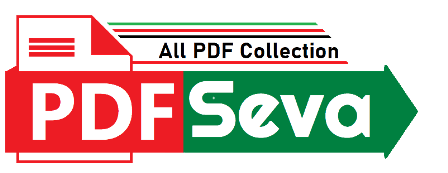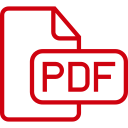
ad here
451 Download
8 months ago
COCA-COLA Products List PDF Free Download, Coca-cola Product List 2013 Is Available For Free Or Read Online. List Of Coca-cola Bottled Products Available.
The Coca-cola Company Is A Global Beverage Firm Recognized For Its Wide Variety Of Non-alcoholic Drinks. While Particular Goods And Availability May Vary By Area, Below Are Some Of The Important Items Connected With Coca-cola:
While the Coca-Cola brand is synonymous with cola beverages, the company has expanded its portfolio to include various non-carbonated drinks and other brands. Some of these include:
7 Up is a brand of lemon-lime flavored carbonated soft drink, and its product line includes variations such as:
The ingredients in Coca-Cola products can vary based on the specific beverage. However, some common ingredients found in cola beverages include:
It’s Important To Remember That The Formulas Of These Medications Might Change Over Time, And The Availability Of Particular Variants Varies By Area. In Addition, Coca-cola And Other Beverage Firms May Launch New Products Or Modify Current Ones In Response To Customer Preferences And Market Trends.
The Coca-cola Company Has Created Its First Beverage Bottle Using 100% Plant-based Plastic, Except The Cap And Label, Using Commercial-scale Technology. This Marks A Significant Step Forward In The Company’s Sustainable Packaging Journey.
The Prototype Bottle Comes More Than A Decade After The Company’s Plantbottle™ Debuted As The World’s First Recyclable Pet Plastic Bottle With Up To 30% Plant-based Content. A Limited Run Of Roughly 900 Prototype Bottles Were Created.
“We Have Been Working With Technology Partners For Many Years To Develop The Right Technologies To Create A Bottle With 100% Plant-based Content—aiming For The Lowest Possible Carbon Footprint—and It’s Exciting That We Have Reached A Point Where These Technologies Exist And Can Be Scaled By Participants In The Value Chain,” Said Nancy Quan, Chief Technology And Innovation Officer Of The Coca-cola Company, In A Press Release.
Pet, The World’s Most Recycled Plastic, Is Made Up Of Two Molecules: Around 30% Monoethylene Glycol (Meg) And 70% Terephthalic Acid (Pta). The Original Plantbottle™, Debuted In 2009, Comprises Meg From Sugarcane. However, The Pta Has Come From Oil-based Sources Till Now. Plantbottle™ Packaging Is Similar To Typical Pet Packaging In Terms Of Appearance, Functionality, And Recycling, But Has A Lower Environmental Impact.
Coca-cola’s New Plant-based Bottle Is Constructed From Plant-based Paraxylene (Bpx), Which Has Been Transformed To Plant-based Terephthalic Acid (Bpta) Using A Novel Virent Method. This New Technique Marks A Significant Shift In The Biomaterial’s Commercial Feasibility, Since It Is The First Beverage Packaging Material Created At Demonstration Scale From Bpx. This Bottle’s Bpx Was Made Using Maize Sugar, But The Technology Is Adaptable To Many Feedstocks.
The Coca-cola Company And Changchun Meihe Science & Invention Jointly Hold The Second Ground-breaking Invention, Which Simplifies The Bmeg Manufacturing Process And Permits Feedstock Flexibility, Allowing For The Use Of A Wider Variety Of Renewable Resources.
Generally, The Process Used To Manufacture Bmeg Involves First Turning Maize Or Sugarcane Into Bioethanol, Which Is Then Transformed Into Bioethylene Glycol. The Technique Is Now Easier Since Meg May Be Produced Straight From Sugar Sources.
The First Licensee Of The Technology, Upm, Is Now Constructing A Large-scale Commercial Plant In Germany To Convert Hardwood Feedstock That Is Certified Sustainably Produced From Sawmills And Other Wood Industry Side-streams Into Bmeg. This Is A Big Step In The Right Direction For The Technology’s Commercialization.
“The Fundamental Difficulty With Pursuing Bioethanol Is That You Are In Competition With Fuel,” Said Dana Breed, The Coca-cola Company’s Global R&d Director Of Packaging And Sustainability.
In Order To Overcome This Obstacle, We Need A Next-generation Meg System That Could Also Use Second-generation Feedstock, Such As Agricultural Wastes Or Forestry Waste. Utilizing Excess Agricultural Products To Reduce Carbon Footprint Is Our Objective For Plant-based Pet, Therefore The Partners’ Mix Of Commercialization Technologies Is A Perfect Match For This Approach.”
Using Lab-scale Manufacturing Techniques To Create Bpx, Coca-cola Debuted Its First Prototype For A 100% Bio-based Plantbottletm In 2015 At The Milan Expo. On The Other Hand, The Production Of The Biochemicals Needed To Manufacture This Next-generation, 100% Plant-based Bottle And Suitable For Commercial Scale Has Been Accomplished Via The Use Of Innovative Technologies.
Coca-cola Has Let Non-competitive Businesses To Use The Technology And Brand In Various Products—from Heinz Ketchup To The Cloth Upholstery Of Ford Fusion Hybrid Cars—since Launching Plantbottletm. To Increase Demand And Lower Prices, The Firm Expanded The Use Of The Plantbottletm Ip To Rivals In The Beverage Sector In 2018.
Coca-cola Is Striving To Make All Of Its Packaging More Sustainable As Part Of Its World Without Waste Mission. This Includes Optimizing The Use Of Recycled And Renewable Materials While Limiting The Usage Of Virgin, Fossil Material. The Firm Has Committed To Recycling Old Bottles Into New Ones, Collecting Back The Equivalent Of Each Bottle It Sells By 2030, Making 100% Of Its Packaging Recyclable, And Guaranteeing That 50% Of Its Packaging Is Made Of Recycled Materials.
The World Without Waste Vision Is Supported By This Innovation, Particularly The Newly Declared Goal Of Using 3 Million Fewer Tons Of Virgin Plastic Derived From Oil-based Sources By 2025. The Coca-cola Company Plans To Achieve This 20% Reduction Through Investments In New Technologies For Recycling, Such As Enhanced Recycling, Lightweighting Of Packaging, Development Of New Renewable Materials, And Alternative Business Models Like Refillable, Dispensed, And Fountain Systems.
Coca-cola And Its Bottling Partners Plan To Completely Eliminate The Use Of Oil-based Virgin Pet In Plastic Bottles In Western Europe And Japan By 2030. Instead, They Will Solely Use Recycled Or Renewable Materials.
A Certain Amount Of “Virgin” Material Will Still Be Required To Meet Quality Requirements Even If Mechanically Recycled Component Will Make Up The Bulk Of The Plastic Packaging Material.
For This Reason, Coca-cola Is Promoting Innovation And Making Investments To Increase The Availability Of Feedstock From Improved Recycling And Renewable Technology. Improved Recycling “Upcycles” Discarded Pet Plastics Into Food-grade, Premium Pet From Any Quality.
Quan Said, “As We Move Toward A Circular Economy And In Support Of A Shared Ambition Of Net-zero Carbon Emissions By 2050, We Are Taking Significant Steps To Reduce Use Of ‘virgin,’ Oil-based Plastic.” “We See A Critical Role For Plant-based Plastics In Our Overall Pet Mix Going Forward, Supporting Our Goals To Lower Our Carbon Footprint, Lessen Our Dependency On “Virgin” Fossil Fuels, And Increase Pet Collection In Support Of A Circular Society.”
| PDF Name: | COCA-COLA-Products-List |
| Author : | Live Pdf |
| File Size : | 99 kB |
| PDF View : | 22 Total |
| Downloads : | 📥 Free Downloads |
| Details : | Free PDF for Best High Quality COCA-COLA-Products-List to Personalize Your Phone. |
| File Info: | This Page PDF Free Download, View, Read Online And Download / Print This File File At PDFSeva.com |
Copyright/DMCA: We DO NOT own any copyrights of this PDF File. This List Of Coca-cola Brands PDF Free Download was either uploaded by our users @Live Pdf or it must be readily available on various places on public domains and in fair use format. as FREE download. Use For education proposal. If you want this List Of Coca-cola Brands to be removed or if it is copyright infringement, do drop us an email at [email protected] and this will be taken down within 24 hours!
© PDFSeva.com : Official PDF Site : All rights reserved
